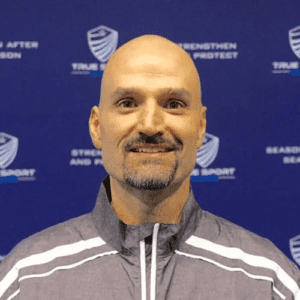Because of the fact that there are multiple locations where shin splints can occur, the format of this weeks article will be a straight discussion.
There are three main areas where one can suffer a “shin splint.” The most common being the medial or inside portion of the lower leg. Often times this pain is due to a weakness in the Tibial Posterior muscle. It is also possible that the muscle is not weak, but is overused due to some other muscle not being as active as it should be. Examples could include the adductors, gastrocnemius, or soleus to name a few. When a shin splint is left untreated for an extended duration, the attachment from the muscle to the bone begins to pull with excessive force and a periosteal reaction occurs. This is essentially the precursor to a stress reaction in the Tibia. Radiologists used to use the word stress fracture, however in the last couple of years it seems that they were scaring too many patients so the verbiage morphed into something less alarming. Needless to say, the excessive stress on the muscles, and tendons can be extremely debilitating.
The second area that we will chat about is the anterior compartment of the lower leg or the front of the shin. This is caused by a weakness in the Tibialis Anterior muscle.
The last area that can be officially called a shin splint is the outside of the lower leg or the lateral compartment. The muscle that need to get checked in the situation are the Peronei group. There are 2, sometimes 3 muscles in this group. The Longus, Brevis and some folks, but not all folks, even have a Tertius.
What can be done?
Typically the old methodology dictated to rest, ice, and compress the area. As you all should realize by now, this is just a temporary cure and at no point is the physiology changing with this method. A detailed analysis is necessary to change the brains utilization strategy so that it becomes more efficient with less imbalances. I know I sound like a broken record but at some point I want everyone thinking, “I have pain, which means there must be an imbalance.” “I have an overuse syndrome, therefore some other muscle is suffering from an “UNDERUSE SYNDROME.”” In fact, from this point forward there are no more overuse syndromes, only underuse syndromes. In any of the scenarios previously presented, the key is to find the UNDERUSED muscle and activate it. It is the ONLY way to achieve any degree of permanency with the therapy.
We even had an athlete on the Bobsled team who was suffering from shin splints for the entire season. He was getting taped and was putting a topical anti-inflammatory on to quell the pain for competition. When I got a hold of him, I tested the associated structures and revealed that his adductors were not pulling their weight and the tibialis posterior was trying to help and therefore was oversued. We taught him about his underused muscle and his symptoms were now beginning to diminish, to the point where he didn’t need to get taped any longer. I was only with them for 2 weeks. Imagine the possibilities.
It is certainly not easy to change methods that have been in place for many decades, however I only as that you as an athlete perpetually question everything. Press your therapist and do not accept the answer of Overuse. That is not an answer. It is being overused for a reason…find out why?

